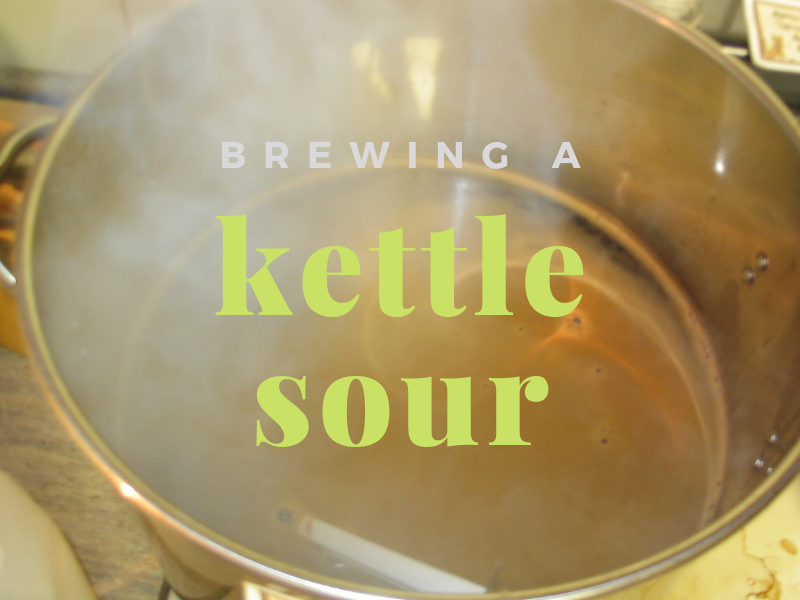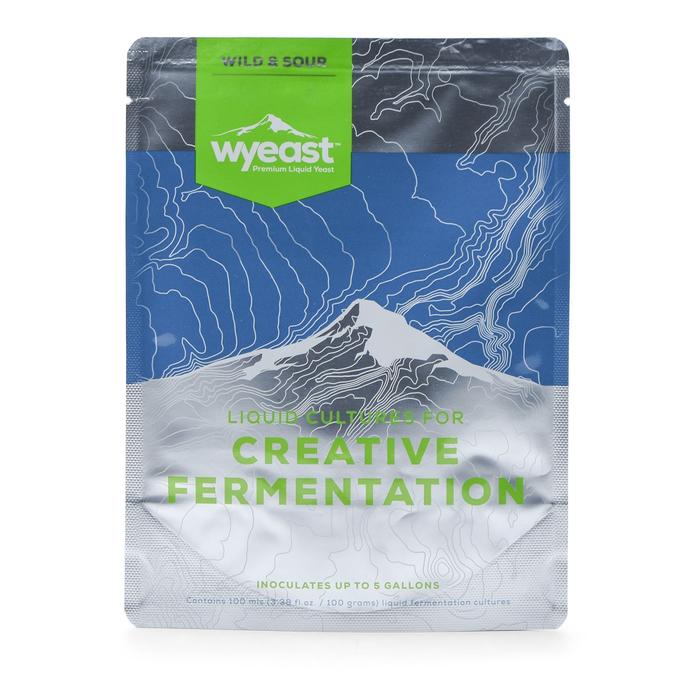Kettle Sour: Brewing Your First Kettle Soured Beer

You can love it. You can hate it. But there’s no denying the fact that sour beer is an integral part of the vast and intriguing world of beer. Sour beers have enjoyed an immense rise in popularity lately and in particular, kettle soured beers.
Kettle soured beers refers to sour beers that are produced quickly and rely on microbes present in the mash, in particular, Lactobacillus, to create a tart and sour beer in a matter of days, rather than months or years for more traditional sour beers.
Table of Contents
All About Sour Beers
More and more craft breweries are venturing into the rich and wild sour beer territories, employing various methods and techniques to obtain a whole variety of tastes that can generally be described as sour, tart and funky.
As with virtually any beer style or category, what can be done on a large scale in a commercial brewery can also be replicated in the comfort of small-batch homebrewing.
When speaking of sour beers from the home brewer’s perspective, one of the most important things is to understand that there are two major ways to produce them:
- Mixed Fermentation
- Kettle Soured (Quick Soured)
Depending on which you choose to go with, the resulting beer will fall into a certain flavour range inherent to that particular method.
Mixed Fermentation
The first method consists of adding either Brettanomyces, wild yeast, or an entire blend of bacteria and yeast in secondary fermentation. In some cases after a clean primary fermentation with ordinary brewers yeast.
Some of the most prominent examples of this method are traditional Belgian Lambics, notorious for their tartness and complexity.
The major downside of this approach is the amount of time it usually takes to complete the fermentation, which may take up to several years. If you don’t have the patience for such experiments, there’s a shortcut to getting that tang in your beer.
Kettle Souring
The second method is known as kettle souring. It has become rather popular with craft brewers in recent years due to a number of factors.
The best examples of a kettle soured beers are Berliner Weisse and Gose. These beers traditionally where brewed with mixed fermentations but kettle souring has become more and more popular for beer styles like these.
What makes it different from a brett or mixed fermentation beer, is that the process is usually closely controlled and takes only a fraction of the time necessary for making a decent Lambic or any other similar beer.
Of course, comparing Lambic to Berliner Weisse is rather nonsensical, since both deliver a totally different set of flavours and aromas. But if we’re talking about an introduction to brewing sour beers, this is a good way to grasp the difference between these two approaches.
Brew Your Own Kettle Soured Beer

For the sake of making things simple, we’ll take a closer look on kettle souring with an example of a classic German Berliner Weisse that can be brewed with virtually any homebrewing setup.
Traditional Berliner Weisse that originated around the 16th century in Northern Germany benefited from a prolonged secondary fermentation with lactobacillus and Brettanomyces.
However, many modern commercial examples of the style are made by kettle souring, which is a quicker and easier to control method of obtaining prominent acidity in your beer.
How Kettle Souring Works
If you’ve ever had the misfortune of leaving warm mash in the kettle overnight without boiling it, you probably know already.
The main peculiarity of this method consists of obtaining acidity before the actual wort boiling occurs. This can be done by letting some of the wild yeast and bacteria to infect your wort, but there’s a better-controlled alternative to this: Lactobacillus.
Pitching Lactobacillus
Lactobacillus is a crucial element of kettle souring since it’s responsible for producing lactic acid, which will come through as the main acidifying agent in the finished beer.
You are most likely familiar with this bacteria since it’s crucial in producing yoghurt, sauerkraut, pickles, sourdough bread, and many other food products.
Sourcing Lactobacillus For Brewing
Sourcing a proper Lactobacillus culture is an art of its own and a topic for numerous discussions among homebrewers.
Lactobacillus can be cultured for brewing from:
- Grain
- Yoghurt
- Sauerkraut
- Probotics
- Sour dough starters
For a first attempt I would recommend buying a pure commercial strain.

Yeast companies provide pitchable pouches of lactobacillus which I have suggested as the source for Lactobacillus in our method of kettle-souring.
Lactobacillus Creates Acidity With Lactic Acid
The acidity contributed by kettle souring with lactobacillus is the result of its ability to break down sugars into lactic acid.
It is crucial to create all the necessary conditions for the Lactobacillus to work in your wort, which is different from those required for Saccharomyces yeast. It’s the brewer’s task to make the environment right for the lacto to do its thing.
First of all, Lactobacillus is very sensitive to isomerized alpha-acids, even to levels as low as 5 IBU. So adding hops to your wort isn’t a really good idea at the stage of inoculation if you want a quick sour using kettle souring.
Some strains of lactobacillus are very particular about alpha acids and don’t work at all well with any hops in the wort.
How Long For Souring To Happen & What Temperature?
Lactobacillus also requires warmer temperatures compared to any ordinary brewers yeast, temperatures between 30-40C are around the optimum. This means that you will need some form of insulation for your kettle or mash tun to keep the temperature in check while the souring occurs, which usually takes between 24 and 72 hours.
Kettle Soured Berliner Weisse

So let’s look step by step and learn how to kettle sour with an example of a classic German Berliner Weisse:
● The grain-bill and hop selections don’t really differ from a traditional Hefeweizen, so it’s safe to take an even mix of Wheat and Pilsner malts for a start. You can also add a small portion of Acid Malt (up to 5%) to lower the mash pH, which will inhibit the Lactobacillus from breaking down too many proteins, resulting in fuller body and better head retention.
● Hop-wise, it’s safe to go with a small amount of any German noble hop variety as you would with a traditional Weiss, especially knowing the fact that there shouldn’t be any prominent hop flavour or aroma in the finished beer.
● Water should feature a balanced profile since it doesn’t play any serious role in the flavour for this style.
● Aim for a lower Original Gravity in the 1.040s for a truly classic Berliner Weisse, or you can ramp things up if you’re feeling experimental with this beer.
The following course of actions is what makes kettle souring different from conventional brewing or souring in secondary fermentation:
Mash your grains as you normally would, with a single infusion mash at 64-68C
Sparge and collect the wort, separating the liquid from the grains, as usual.
At this point, some brewers prefer conducting a short boil without any hop additions for the sake of sanitizing the wort. In our experience, it’s rather arbitrary, since you can either perform a mash-out at pasteurization temperatures (73-78C) or skip it altogether and proceed to cool the wort.
Unlike ordinary Saccharomyces fermentation temperatures, Lactobacillus requires a range between 30-40C, so don’t over-cool your wort. When you’ve reached the required temperature, pitch your Lactobacillus directly into the wort and make sure to maintain the temperature range for the entire duration of lacto-fermentation.
For your first kettle sour, I’d recommend you select a cultured lactobacillus strain available from all major brewing yeast labs. It’s recommended to make a starter, as usual, a day before you actually brew to ensure the viability of the bacteria.
It usually takes from 1 to 3 days to obtain sufficient acidity in the wort. It’s highly recommended to have a pH meter or strips on hand in order to monitor the progress. If you’re aiming for mild sourness, aim for a pH of 3.6-3.9. For a more pronounced mouth-pucker, you should hold the wort until it reaches a reading of 3.1-3.4. If you don’t have a pH meter, you can simply take out samples from the kettle with a sanitized vessel and trust your senses. When the desired level of acidity is reached, proceed to the next step.
Now it’s time to boil the wort. At this point, you can make any hop additions as you would in a standard beer. The boil itself will kill off any remaining Lactobacillus. However, for the sake of keeping it traditional, you’d need only a small amount of noble hops to achieve the modest bitterness of no more than 8 IBUs found in classic examples of Berliner Weisse.
Proceed to cool the wort to standard yeast pitching temperatures then add yeast. However, it’s important to understand that a highly acidic environment is detrimental to the vitality of brewers yeast. That’s why it’s crucial to aerate your wort, make a starter for liquid yeast and rehydrate dry yeast, and even add yeast nutrient to ensure proper fermentation with Saccharomyces.
Allow the beer to ferment completely, then condition, keg or bottle it as you normally would.
Kettle Souring Is Pretty Easy
As you can see, the entire process is not that different from brewing with conventional yeast, there is just one further process.
The timeframes involved are more akin to producing ordinary beers than to those required for souring in secondary fermentation.
Of course, it would be almost impossible to achieve the sample level of complexity with a kettle sour beer as with a proper Brettanomyces or lactobacillus conditioning for a year or two.
However, if you don’t have the patience or simply want to get a nice tang in your beer without making it overly intricate, kettle souring is certainly a method that will make a nice part of your homebrewing toolkit.




Leave a Reply
Want to join the discussion?Feel free to contribute!